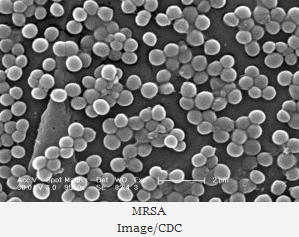While it has long been known that vascular tissue below the skin helps infiltrating white blood cells kill invading pathogens, new research from the University of California, San Diego Medical School has shown that fat cells (adipocytes) also contribute to the body’s defense against pathogens.
 When pathogens enter the dermal layers, usually through a cut or abrasion, it signals the body to make the area’s vascular network more “leaky”. This allows infiltration of neutrophils, macrophages, and other white blood cells to the area of infection, causing inflammation. These white blood cells release their own suite of antimicrobial peptides (AMPs) and engulf the pathogen to prevent further infection.
When pathogens enter the dermal layers, usually through a cut or abrasion, it signals the body to make the area’s vascular network more “leaky”. This allows infiltration of neutrophils, macrophages, and other white blood cells to the area of infection, causing inflammation. These white blood cells release their own suite of antimicrobial peptides (AMPs) and engulf the pathogen to prevent further infection.
One of these AMPs, cathelicidin, was originally discovered in neutrophils but is also present in lysosomes of macrophages and polymorphonuclear leukocytes, and is used to help kill ingested pathogens. Now, these researchers have added adipocytes to the list of cells that produce the highly conserved family of cathelicidin peptides.
The researchers gave mice subdermal injections of methicillin-resistant Staphylococcus aureus (MRSA), and noticed a thickening of the adipose tissue and an increase in cathelicidin concentration before the infiltration of white blood cells. These mice cleared the infection and developed few symptoms. When mice that could not produce additional adipocytes were injected with MRSA, they either died or developed acute infections that were only cleared by the immune system, showing increased adipocyte concentration and quick production of cathelicidin dampens infection.
Interestingly, when the researchers injected obese mice with MRSA, the mice died at a higher rate than the normal weight mice. The assumption is that the expansion of an already unsustainable number adipocytes crowds out beneficial white blood cells, and the increased production of cathelicidin distorts the immune system (it is known that obese individuals suffer disproportionately from autoimmune disorders such as lupus and psoriasis).
This research points to the ability of adipocytes to help fight off infections, provided one is of a healthy weight. In vitro experiments of human adipocytes also demonstrated the ability of these fat cells to produce cathelicidins, paving the way for future clinical experiments.

